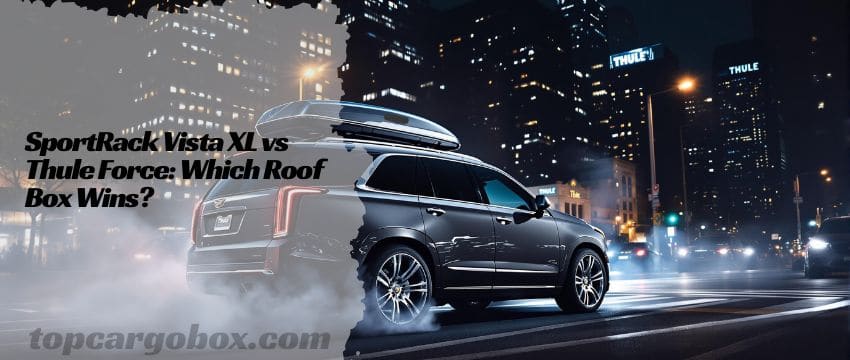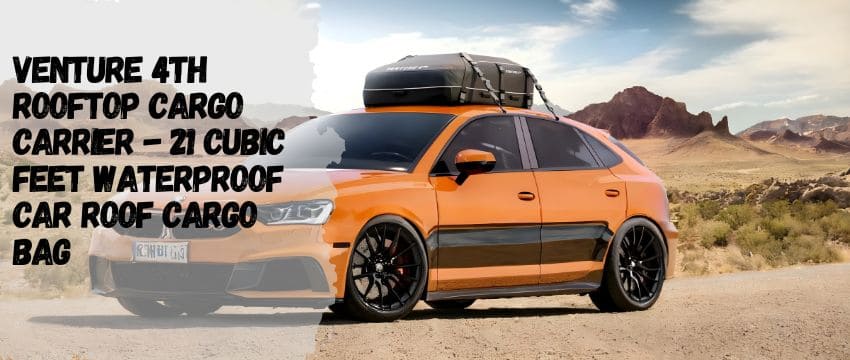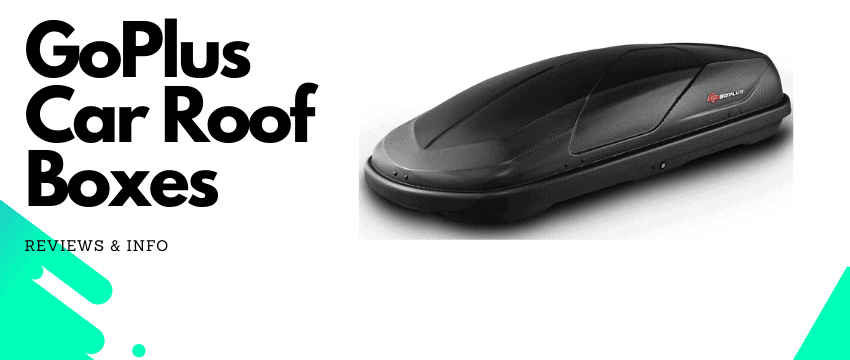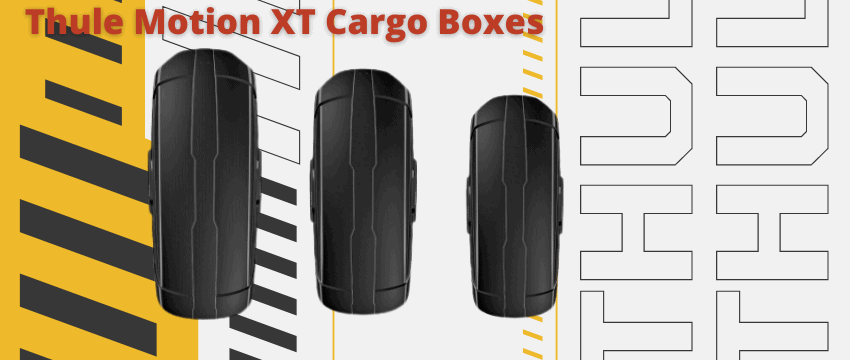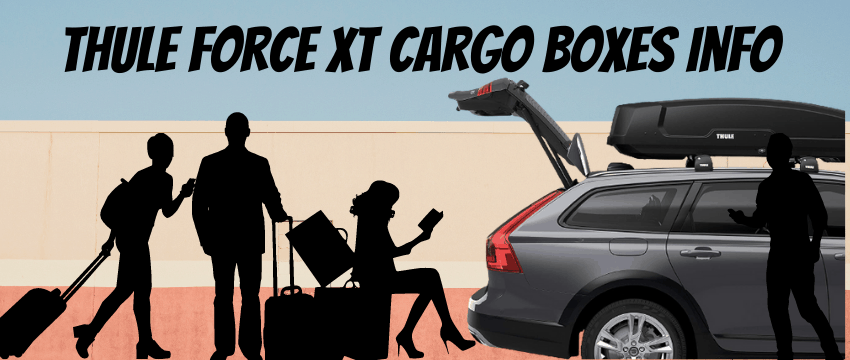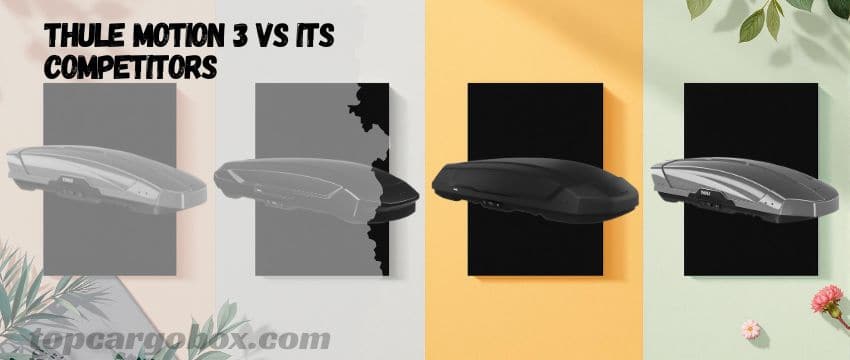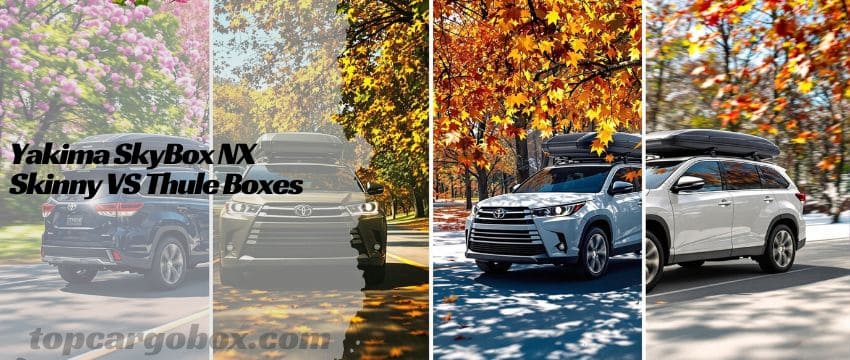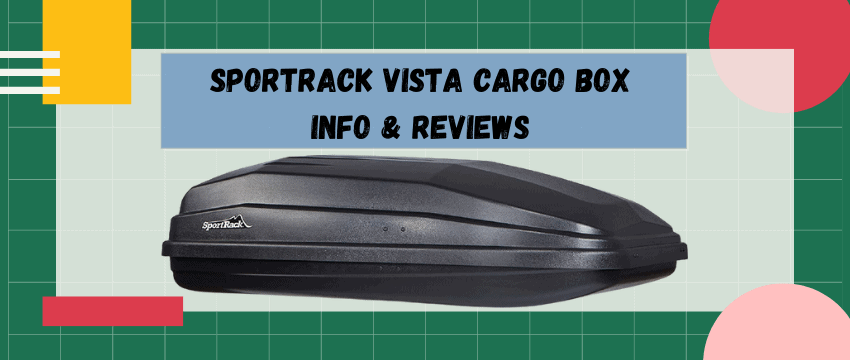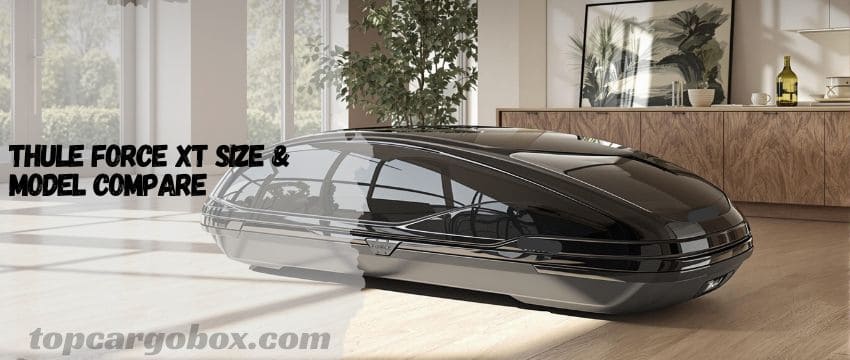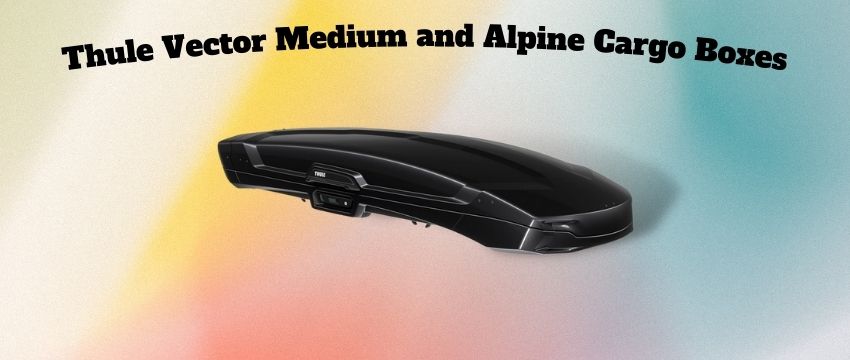What’s up, road warriors and adventure seekers? Ever found yourself staring at your packed car, realizing there’s just no way all that gear is fitting inside? Yeah, we’ve all been there. That sinking feeling when the trunk’s overflowing and the backseat resembles a gear explosion is the absolute worst. Totally kills the pre-trip vibe, right? That’s where a solid rooftop cargo box swoops in like a superhero, saving your sanity and your legroom. But with options like the SportRack Vista XL and the Thule Force popping up everywhere, how do you even choose? Don’t sweat it, we’re diving deep into this showdown, breaking down every detail so you can pick the champion for your specific needs. Forget generic specs; let’s talk real-life use, frustrations, and the little things that make or break a road trip. Buckle up!
Meet the Contenders: SportRack Vista XL & Thule Force
Before we get into the nitty-gritty, let’s properly introduce our two heavyweight contenders. Knowing their core personalities is key to figuring out who aligns with your adventure style.

SportRack Vista XL: This rugged rooftop cargo box offers 18 cubic feet of spacious storage with a rear-opening design for safe, traffic-avoidant loading, featuring UV-resistant ABS plastic and a tool-free mounting system for easy installation.

Thule Force: A sleek, aerodynamic rooftop box with dual-side access for convenient loading from either side of the vehicle, equipped with PowerClick secure mounting and a 165-pound weight capacity for premium durability.
Getting to Know the SportRack Vista XL
How’s it going, value-conscious traveler? The SportRack Vista XL is like that reliable, no-nonsense friend who always shows up ready to work. It’s built tough with UV-resistant ABS plastic, meaning it can handle sun beating down for hours without getting brittle or faded – a legit concern if you park outside a lot. Its big selling point? 18 cubic feet of internal space. That’s seriously roomy, perfect for bulky camping gear, multiple duffel bags for the family, or all the luggage for that extended getaway. The rear opening is a game-changer for safety; accessing your stuff from the back of your car means you’re not leaning over traffic or struggling on a busy roadside.
Installation? They call it “tool-free” for a reason. Those inside knobs you tighten by hand make getting it on and off your roof rack way less of a grunt than older systems. Plus, it comes with locks to keep your gear safe inside and secure the box itself to your car – peace of mind is priceless, right? It fits most factory racks and standard square or round bars, making it super versatile. For real, if you need maximum space on a budget and prioritize easy rear access, the Vista XL is shouting your name. Feeling like this might be your jam? Check out some top contenders for best car roof box under $500 where value kings often reign.
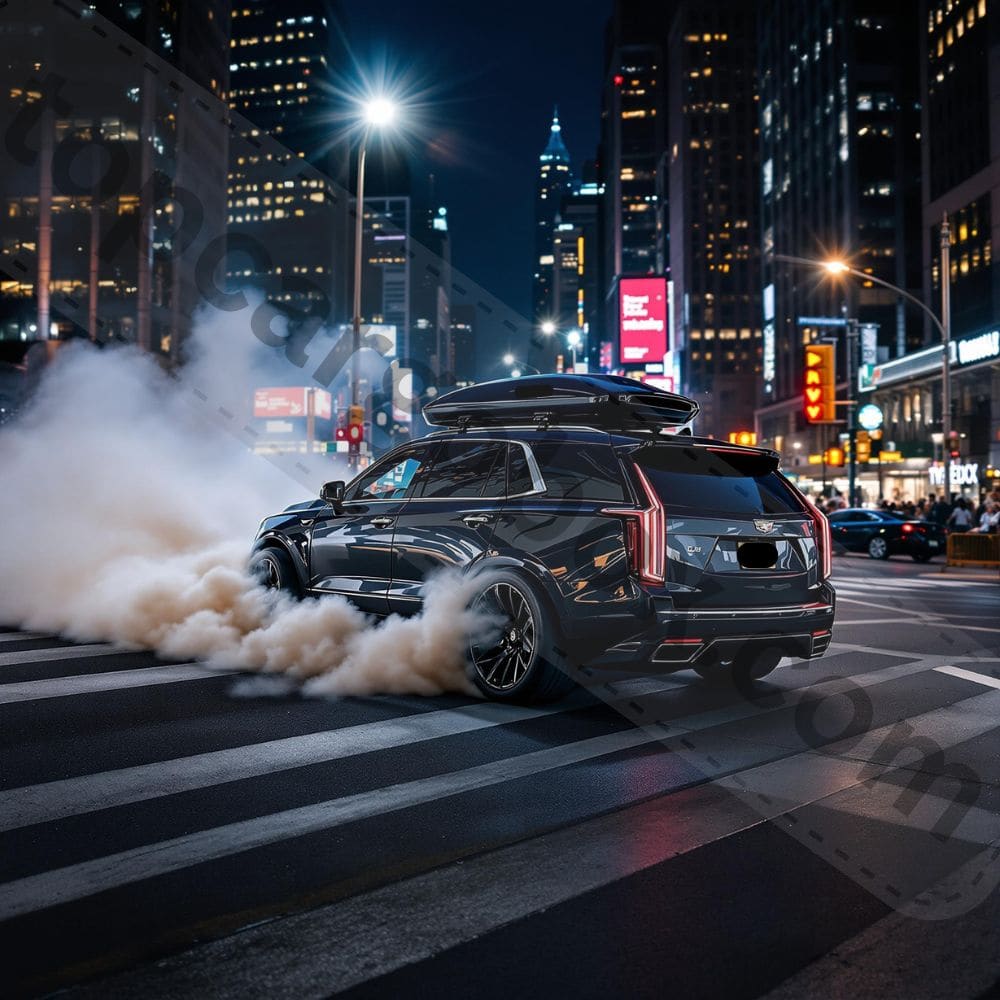
SportRack Vista XL Key Specs
Feature | Specification |
|---|---|
Capacity | 18 cubic feet (510 liters) |
Weight | 28 pounds |
Dimensions | 63″ L x 38″ W x 19″ H |
Opening | Rear |
Mounting | Tool-free, universal (Fits square, round, most factory bars) |
Max Load | 100 pounds |
Material | UV-Resistant ABS Plastic |
Security | Integrated lock for contents & box-to-rack |
Waterproof | Yes |
Crossbar Min/Max | 23 5/8″ – 29 3/4″ |
Getting to Know the Thule Force
Alright, Thule fans and quality seekers, step right up. Thule is basically the old-school, premium brand in the roof box world, like the Swiss Army knife of cargo carriers. The Thule Force lives up to that rep. It feels solid, built with tough materials designed to last season after season. While its capacity is slightly less at 16 cubic feet compared to the Vista XL, Thule packs in some seriously clever features. The star of the show? Dual-side opening. How awesome is that? Need to grab snacks from the passenger side? No problem. Realized you forgot the hiking poles on the driver’s side? Easy peasy.
This flexibility is a total game-changer, especially if you frequently park in tight spots or have passengers helping load/unload. Their PowerClick mounting system is legendary for a reason – you literally hear it click when it’s properly secured. No guessing, no second-guessing yourself on the highway. That’s peace of mind you can’t put a price on. It also sits far enough forward to usually give you full trunk access without bonking your head, which is a nice touch. It carries a higher 165-pound weight limit too. Sure, it comes at a premium price, but you’re paying for proven engineering, refined features, and that Thule durability. Wondering how the Force stacks up against other Thule models? Our deep dive on Thule Force XT size comparisons has you covered.
Thule Force Key Specs
Feature | Specification |
|---|---|
Capacity | 16 cubic feet |
Weight | 41 pounds (approx. 18.7 kg) |
Dimensions | 74.75″ L x 33″ W x 18″ H |
Opening | Dual-Side |
Mounting | PowerClick System (Audible click when secure) |
Max Load | 165 pounds |
Material | Durable Plastic (Matte Black Finish) |
Security | Thule Comfort Key Lock System (LockKnob) |
Waterproof | Yes |
Special | Full trunk access typically maintained |
Breaking Down the Battle: Key Comparison Points
Okay, enough introductions. Let’s get down to brass tacks. Where do these two boxes really differ, and how does that impact your life on the road? We’re talking real-world stuff here – your money, your space, your convenience, and your sanity.
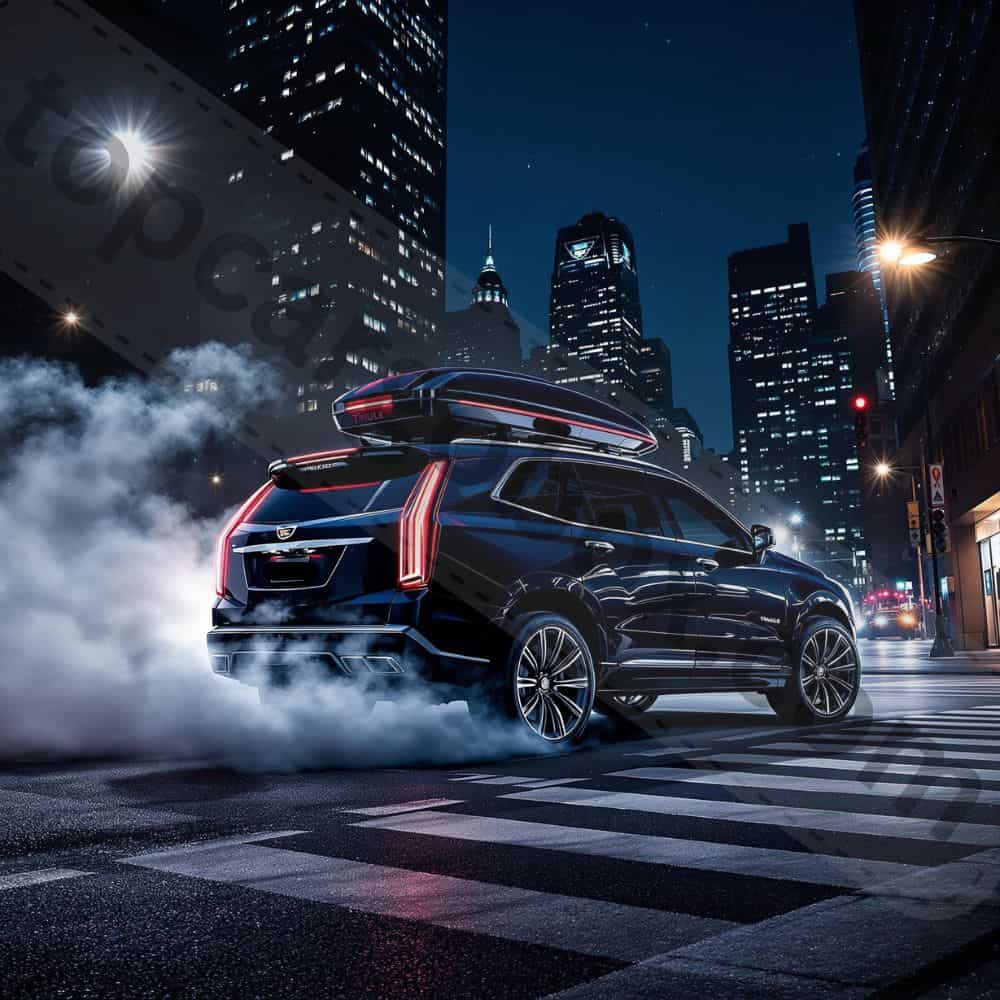
Which One Hits Your Wallet Harder? (Cost & Value)
Let’s be real, price is a huge factor for most of us. Off the top of my head, the SportRack Vista XL consistently lands as a significantly more budget-friendly option. You’re often looking at saving a pretty substantial chunk of change compared to the Thule Force. For that lower price, you get that impressive 18 cubic feet of space and the super convenient rear access. It’s a legit fantastic value proposition – maximum space for minimal dollars. If your main goal is hauling a lot of stuff without breaking the bank, the Vista XL is incredibly hard to beat. It delivers the core function (secure, spacious rooftop storage) very effectively.
The Thule Force, on the other hand, commands a premium price tag. You’re paying for the Thule brand reputation, the refined dual-access system, the foolproof PowerClick mount, and potentially perceived longevity. Is the extra cost worth it? That totally depends. If those specific features (dual access, the click-mount confidence) solve pain points you actually have, then absolutely, it can be excellent value. If you just need basic, spacious storage? The SportRack offers more bang for your buck. Feeling the budget pinch? See what other great options exist in the best car roof box under $500 category.
Who Packs More Punch? (Capacity & Dimensions)
Numbers on paper don’t always tell the whole story, but they give a solid starting point. The SportRack Vista XL boasts 18 cubic feet inside its shorter (63″), wider (38″), and taller (19″) profile. This boxy shape is awesome for bulky, irregularly shaped items – think big tents, sleeping bag rolls, large coolers, or piles of duffels. It’s about pure volume and maximizing what you can stuff inside vertically. The Thule Force, with 16 cubic feet, is noticeably longer (74.75″) but narrower (33″) and slightly shorter (18″). This sleek, torpedo-like shape is super aerodynamic (more on that later), but it favors longer, flatter items. Think multiple skis, snowboards, or luggage packed more linearly. While it holds slightly less volume, its length can be a major advantage for specific gear. Who wins? If sheer cubic volume for bulky gear is king, Vista XL takes it. If you need to carry long items like skis or boards efficiently, or prioritize slicing through the air, the Force’s shape wins. Need even more size comparisons? Our breakdown of Thule Motion 3 L vs XL shows how different sizes fit different needs.
How Do You Grab Your Gear? (Access & Convenience)
This is where things get personal and hugely impact your daily user experience. How many times have you wrestled with a roof box in a crowded parking lot? The SportRack Vista XL’s rear opening is brilliant for safety when parked roadside – you access everything from the relative safety behind your vehicle. Using your rear bumper as a step makes reaching things easier too. However, if you’re parked tight against a wall on the passenger side, or need something buried at the front of the box from the driver’s side, it can be a bit of a stretch or require walking around.
The Thule Force’s dual-side opening is pure, unadulterated convenience magic. Parked awkwardly? Just use the other side. Need something quick from the passenger seat? Lean out and grab it. Sharing loading duties? Perfect. The lid stays open securely on its own on both sides. The trade-off? Opening towards traffic on the driver’s side requires serious situational awareness – not ideal on busy roads. For pure flexibility and ease in varied parking situations, the Thule Force wins hands down. For dedicated rear-access safety, the Vista XL shines. Wondering how Yakima handles access? See how it stacks up in the Yakima SkyBox NX vs competitors comparison.
How Easy is it to Get On and Off? (Installation & Mounting)
Let’s face it, if mounting the box is a huge ordeal, you’re less likely to use it often. Ain’t nobody got time for that! The SportRack Vista XL uses a straightforward tool-free system. You position it, feed U-bolts up from below the crossbars, and then tighten large knobs inside the box. It’s intuitive, doesn’t require digging out a toolkit, and is relatively quick once you get the hang of it. Getting the initial alignment right can take a minute, but overall, it’s user-friendly. The Thule Force employs the iconic PowerClick system.
You attach mounting feet to your bars, then literally lower the box onto them. When it’s seated correctly and secure, you hear and feel a distinct “click.” It’s incredibly satisfying and removes all doubt about whether it’s locked on properly. This system is generally considered one of the fastest and most foolproof on the market, making frequent removal and reinstallation much less of a chore. While both systems work well, the Thule’s audible confirmation and potentially faster setup give it a slight edge for convenience, especially if you plan on taking the box off frequently. Want to avoid common setup headaches? Learn from others’ Thule Motion 3 installation mistakes – many principles apply universally!
Will it Last and Keep Things Safe? (Durability & Security)
You’re trusting this box with your precious gear at 70+ mph, so build quality matters. Both boxes are made from durable, UV-resistant plastics designed to withstand weather and highway speeds. Thule has a long-standing reputation for exceptional build quality and longevity – their boxes are known to last for many, many years. SportRack, while generally robust, is positioned as a more budget-conscious brand, and some users report slightly thinner feeling plastic compared to premium Thule models. However, the Vista XL is well-regarded within its price point for toughness. Security-wise, both offer integrated locks.
The Vista XL uses a standard key to lock the lid and secure the box to the crossbars via the U-bolts. The Thule Force uses their proprietary “Comfort Key” system with a LockKnob – the key is often considered more ergonomic, and the system helps prevent accidental damage to the key slot. Both deter casual theft effectively. If ultimate long-term durability is your top concern, Thule’s reputation is hard to beat. For solid security and durability at its price, the SportRack holds up well. Confused about locking mechanisms? Our guide on roof box basics covers security features.
What’s the Hit on Gas Mileage? (Aerodynamics & MPG)
Here’s the bummer: any roof box will hurt your fuel economy. It’s pure physics – you’re sticking a big sail on top of your car! However, the amount of the hit varies. The Thule Force, with its longer, narrower, sleeker profile, is explicitly designed to be more aerodynamic. It slices through the air cleaner, creating less drag and turbulence. The SportRack Vista XL, being boxier and taller, tends to create more drag. Real-world MPG loss depends heavily on your vehicle, driving speed, and what’s inside the box, but you can generally expect a slightly smaller penalty with the Thule Force, especially at highway speeds. Think maybe 1-3 MPG difference between the two designs under similar conditions. While neither is fuel-efficient, the Force’s shape aims to minimize the pain at the pump. It’s a long shot to expect great MPG with any box, but design matters! Curious about the general impact? We discuss MPG effects in our roof box buying guide.
And The Winner Is… It Depends On YOU!
Seriously, dude? After all that, I can’t just crown one absolute champion? Nope! Because the best roof box is the one that perfectly fits your specific life, budget, and vehicle. That’s the real takeaway here.
- Choose the SportRack Vista XL If: Your main priority is getting the absolute most internal space for the lowest possible price. You value rear-access safety and don’t mind a potentially slightly more involved mounting process. You need to haul bulky camping gear, lots of luggage, or gear for a big family trip without spending a fortune. You have standard crossbars and want a reliable, spacious workhorse. If maximizing value and cubic feet is your jam, the Vista XL is legit awesome.
- Choose the Thule Force If: You prioritize ultimate convenience and flexibility with that game-changing dual-side access. You want the fastest, most confidence-inspiring mounting system with the PowerClick “click”. You value Thule’s reputation for premium build quality and longevity. You frequently carry longer items like skis/snowboards or want potentially slightly better aerodynamics. You’re willing to invest more for those refined features and the Thule ecosystem. If convenience and premium feel top your list, the Force is totally worth considering.
Your Roof Box Questions, Answered (FAQs)
You’ve got questions, we’ve got answers! Here’s the lowdown on some common rooftop cargo box head-scratchers.
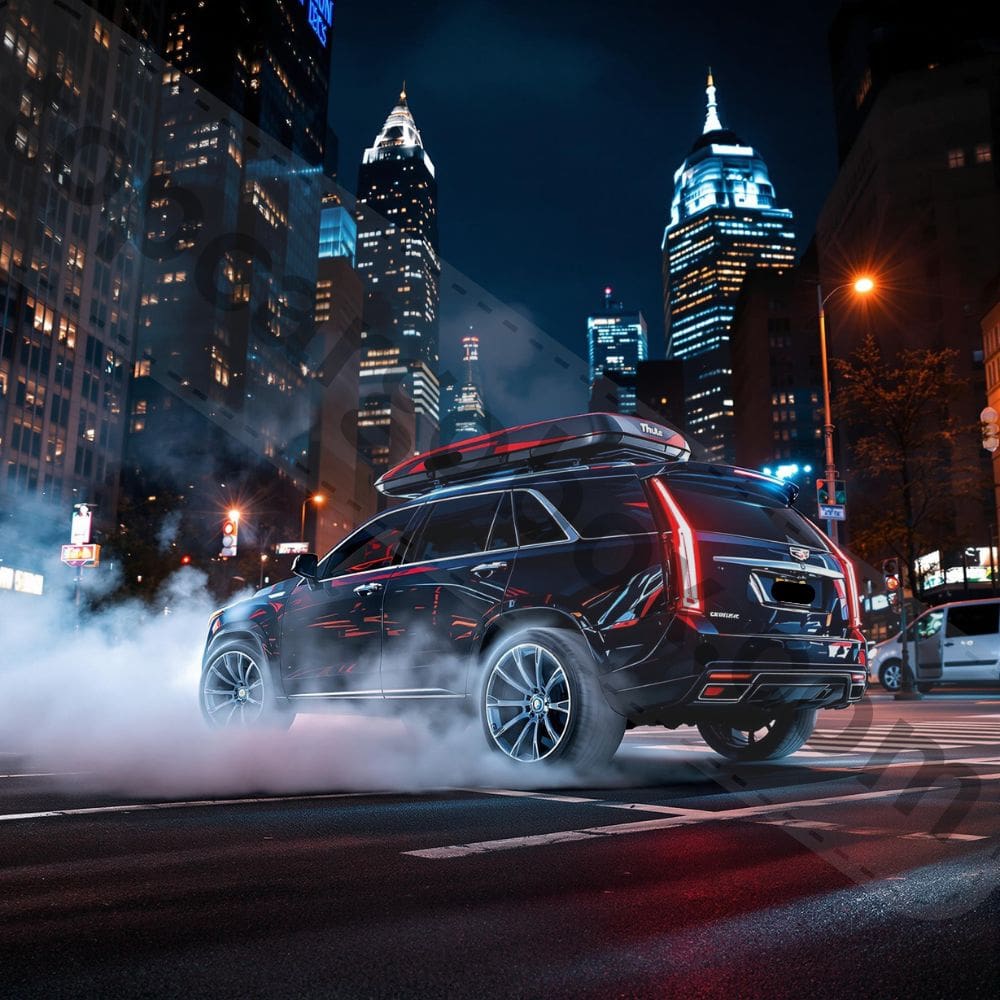
Are Thule and SportRack the same?
No way! Thule and SportRack are totally separate brands. Thule is a Swedish company, kind of the premium, old-school leader in roof racks, boxes, and cargo solutions – think top-tier quality and price. SportRack is often seen as a more value-focused brand, frequently offering similar core functionality (like carrying gear on your roof!) but at a more accessible price point. While SportRack makes perfectly good, reliable products (like the Vista XL we discussed), Thule generally uses higher-grade materials, more refined engineering, and comes with that established reputation, which is why they cost more. It’s like comparing a reliable economy car to a well-engineered luxury SUV – both get you there, but the experience and price differ.
Who makes the best rooftop cargo carrier?
Oh man, “best” is super subjective! It depends entirely on what you value most. Thule consistently ranks at the top for premium build quality, innovative features (like PowerClick!), aerodynamics, and overall refinement – they’re often considered the industry benchmark. Yakima is another major player right up there with Thule, known for great durability and sleek designs. SportRack (and similar brands like Inno) are fantastic for offering solid performance and significant space at a much friendlier price, making them the “best” for budget-conscious buyers needing core functionality. For pure luxury and space, brands like RoofBox might be contenders. Ultimately, the “best” is the one that perfectly balances your budget, required space, desired features (like access type!), and fits your vehicle. Check out comprehensive comparisons like Yakima SkyBox NX vs others to see top players side-by-side.
What is the best brand of roof boxes?
Similar to above, Thule and Yakima are widely regarded as the top-tier, premium brands. They invest heavily in R&D, use high-quality materials, offer excellent warranties, and have extensive fit guides and accessories. They set the standard for durability, aerodynamics, and user-friendly features. SportRack is a very strong contender in the mid-tier/value segment, offering reliable performance at a lower cost. Other brands like Inno or Kuat also have solid offerings. The “best” brand for you depends on your budget and needs: Thule/Yakima for top-end performance and features, SportRack/Inno for excellent value and core functionality. Don’t sleep on researching specific models within brands too – sometimes a great SportRack box might suit you better than a smaller Thule! Our guide on choosing roof boxes breaks down brand strengths.
Why are Thule boxes so expensive?
For real? Yeah, the price tag can be a shocker. But there are legit reasons. First off, Thule uses high-quality, durable plastics and metals designed to last for years, even in harsh sun and weather. They spend a ton on engineering for optimal aerodynamics (to save you some gas!), secure mounting systems (like PowerClick), and clever features (like dual-side openings or integrated locks). You’re also paying for rigorous testing – Thule boxes are built to handle highway speeds and weight safely. There’s the brand reputation and premium positioning too. Plus, extensive research, design, and their warranty coverage factor in. It’s not just branding; you’re generally getting superior materials, engineering, and potentially longer lifespan compared to budget boxes. Think of it as an investment in hassle-free travel for many seasons. See how specific models, like the Thule Force XT, justify their cost with features.
How much does a roof box affect MPG?
Bummer alert: it will hurt your fuel economy, no doubt. You’re adding significant wind resistance and weight up high. The exact MPG hit varies wildly: your vehicle’s shape, the box’s size and aerodynamics (sleeker = better!), how much stuff is inside, and especially your driving speed are huge factors. Driving 65 mph vs 75 mph makes a big difference! Off the top of my head, expect anywhere from a 5% to a whopping 25% decrease in fuel efficiency. A sleek box on an SUV at moderate speeds might be on the lower end, while a big, boxy carrier on a sedan at 80 mph will suck gas. Aerodynamic boxes like the Thule Force aim for the lower end of that range, while larger, boxier ones like the SportRack Vista XL might trend higher. It’s a trade-off for space! Minimize the pain by removing the box when not needed and driving a bit slower.
Does Costco sell roof racks?
Costco’s inventory is always rotating, so it’s not a guaranteed yes. Sometimes, especially during seasonal pushes (like summer or winter), you might find Costco carrying specific roof rack systems or cargo boxes, often from major brands like Thule or Yakima, potentially at competitive prices. They might offer bundles too. However, it’s definitely not their core product category year-round. Your best bet is to check their website or visit your local warehouse, but don’t count on it as your primary source. For consistent selection, fit guides, and specialized advice, dedicated automotive or outdoor retailers (online or physical) are usually more reliable. They can ensure you get the right fit and accessories. Need help figuring out what fits? Our roof box buyer’s guide covers compatibility basics.
So, what’s it gonna be? The spacious value champ, SportRack Vista XL, or the convenient feature leader, Thule Force? Only you know what matters most for your adventures. Whichever you choose, here’s to more space, less stress, and hitting the open road ready for anything! Catch you later, and happy travels!
Our team is creating outdoor-gear relevant articles with passion. If our articles can help you to find the correct solutions for your questions, we will be happy about that. In the content creation process, we usually collect accurate and useful information online or offline to compile our content in an organized way. Consequently, we can guarantee that you can discover some expected answers to your questions. We appreciate your time on our site.

